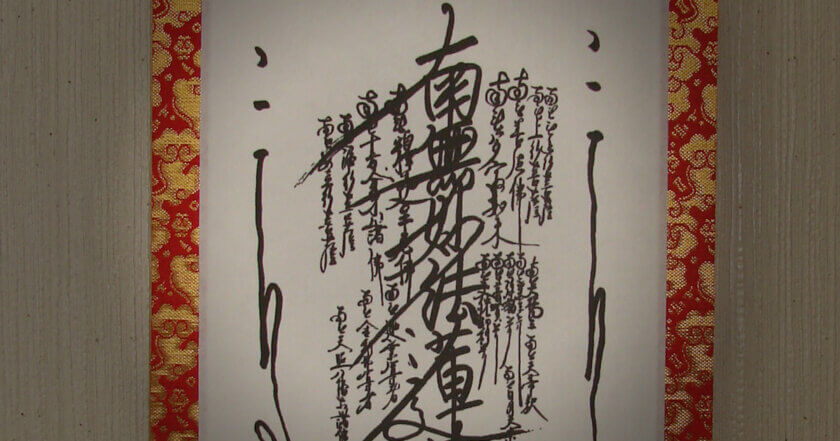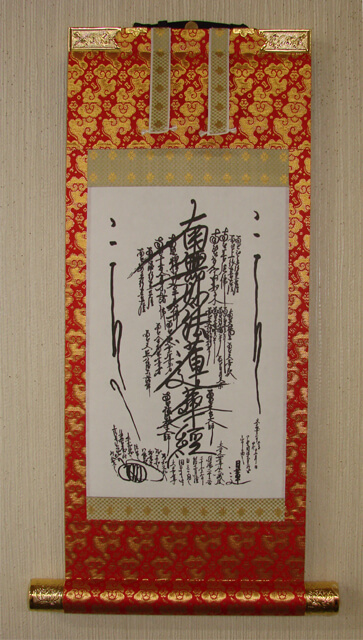Spreading Japanese Kakejiku Globally: Commission of Nichiren Mandala from South Africa

In a previous episode, we shared a story about receiving a production request for a Nichiren Mandala from a customer in the UK.
We have occasionally received requests from overseas for Nichiren sect mandala scroll, but they often do not lead to orders. However, this was our first order, so it remains a memorable experience.
This time, that customer from the UK kindly introduced us to another client.
The new customer resides in South Africa. This was our first transaction with someone from South Africa, and to top it off, it was for a Nichiren Mandala, which was doubly surprising.
The customer had various specific requests, including the desire for the mounting to be done with a red brocade fabric. Therefore, we proposed several options from our inventory of fabric.
Here is the completed Nichiren Mandala hanging scroll.

Shipping to South Africa was also a first for us, but thankfully, it arrived without any issues.
We were delighted to receive a comment from the customer saying, “Thank you SO MUCH. It looks FANTASTIC.”
We are always ready to assist with any inquiries related to hanging scrolls, so please do not hesitate to contact us.


